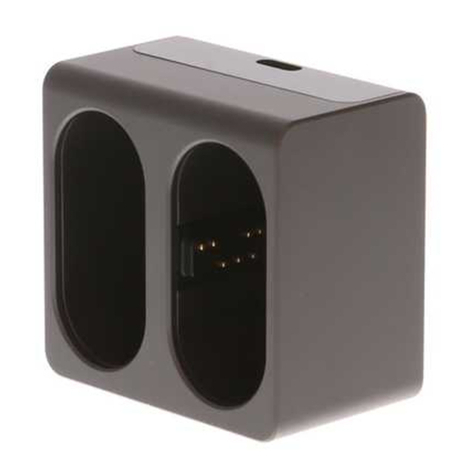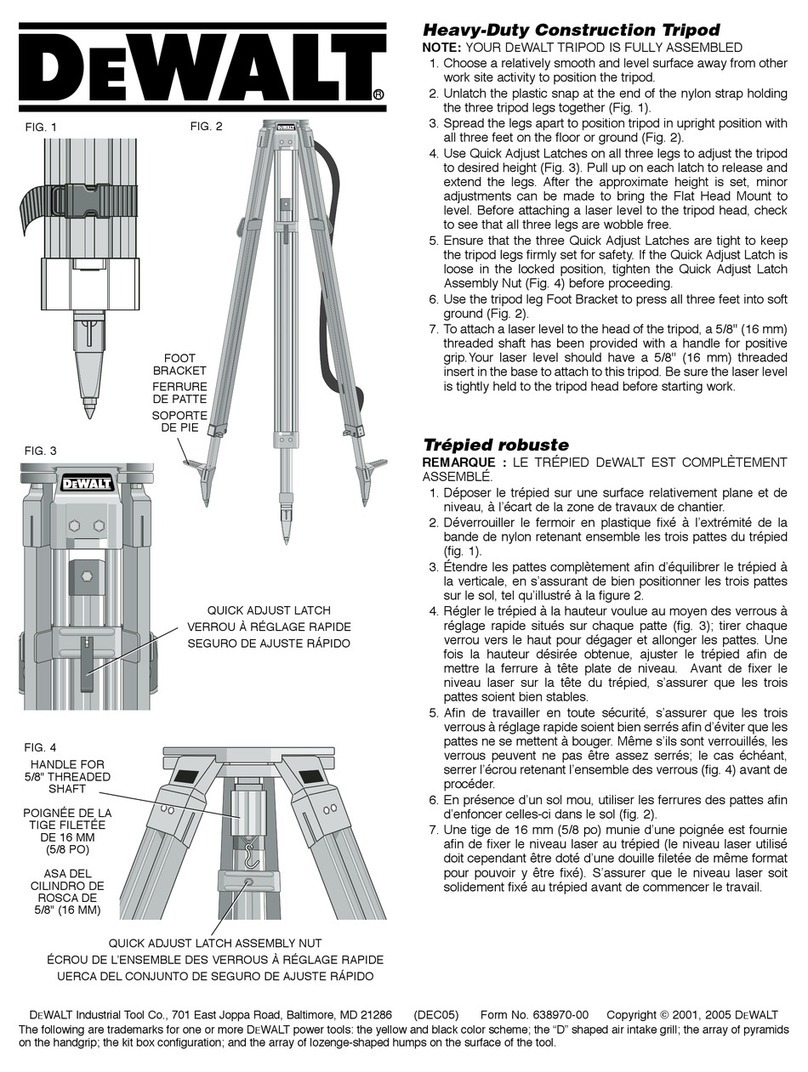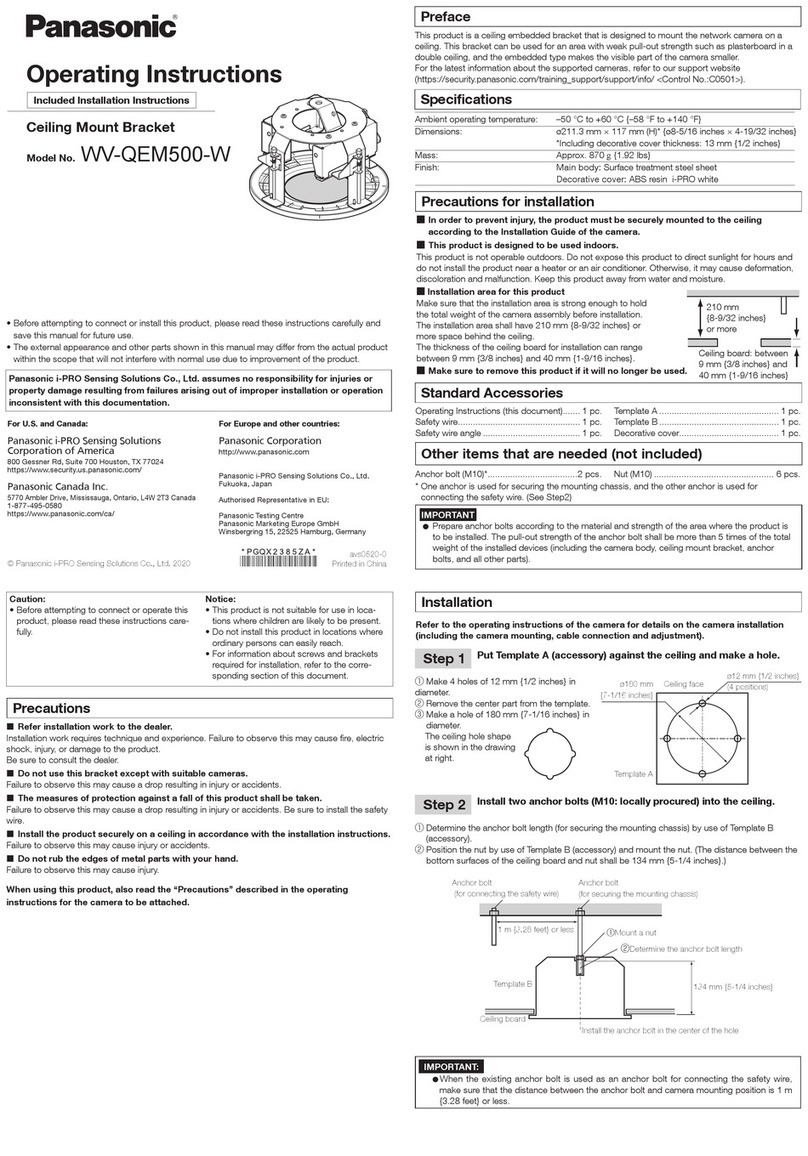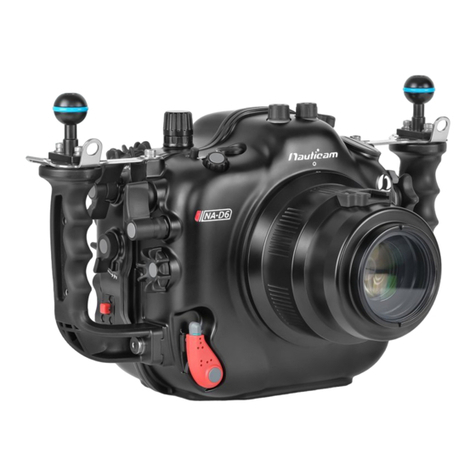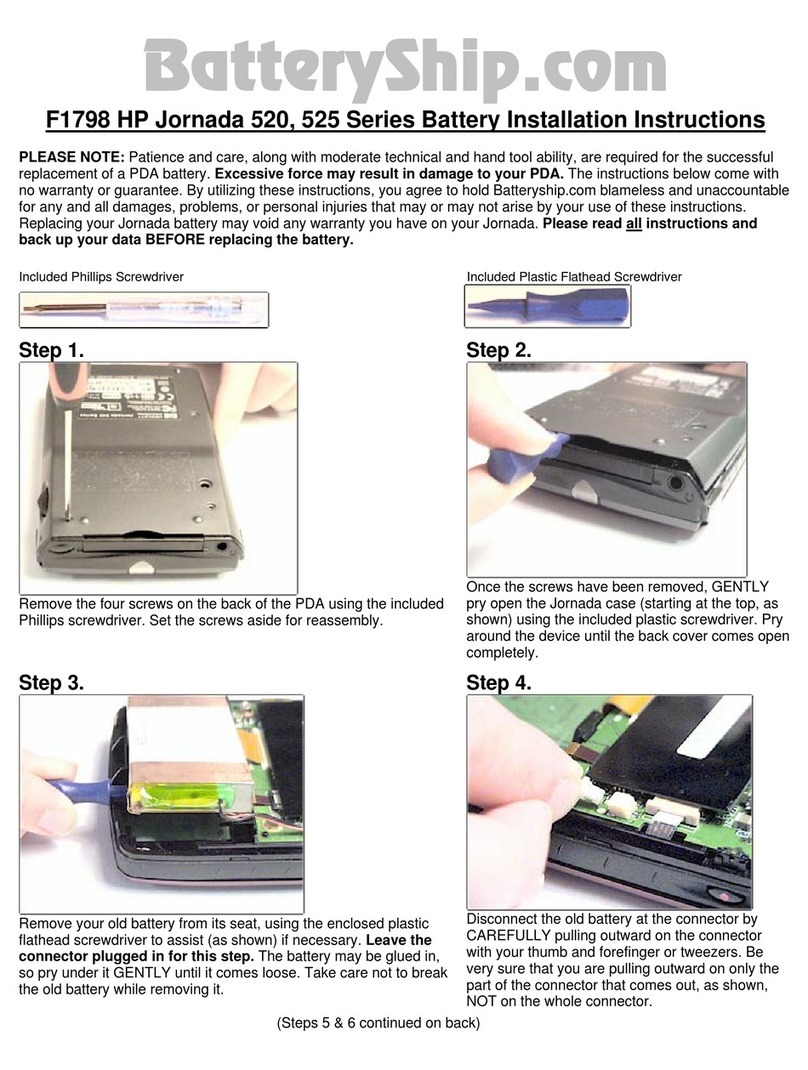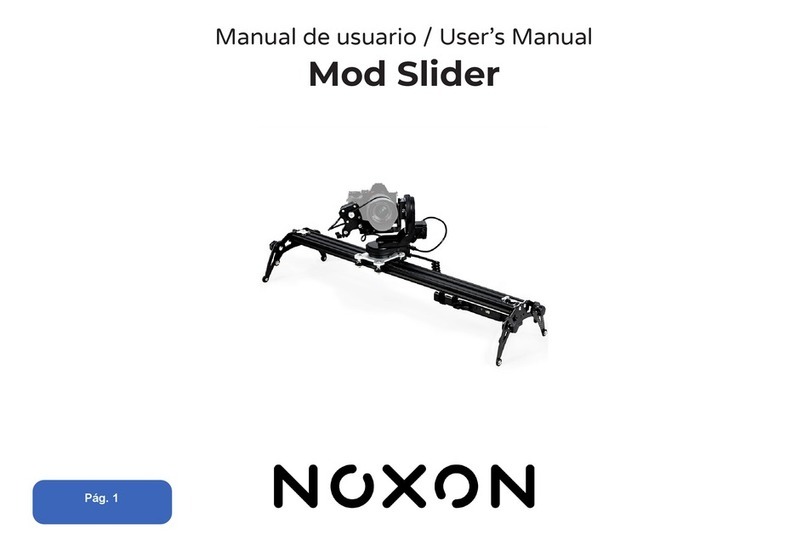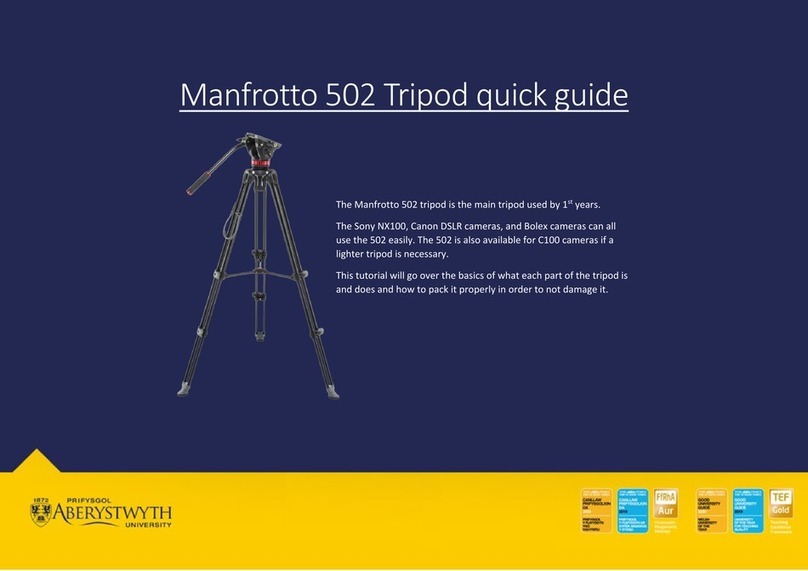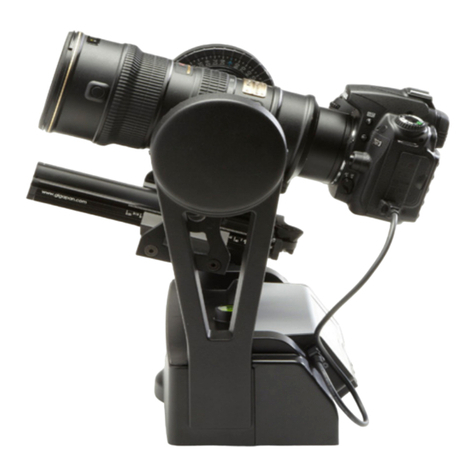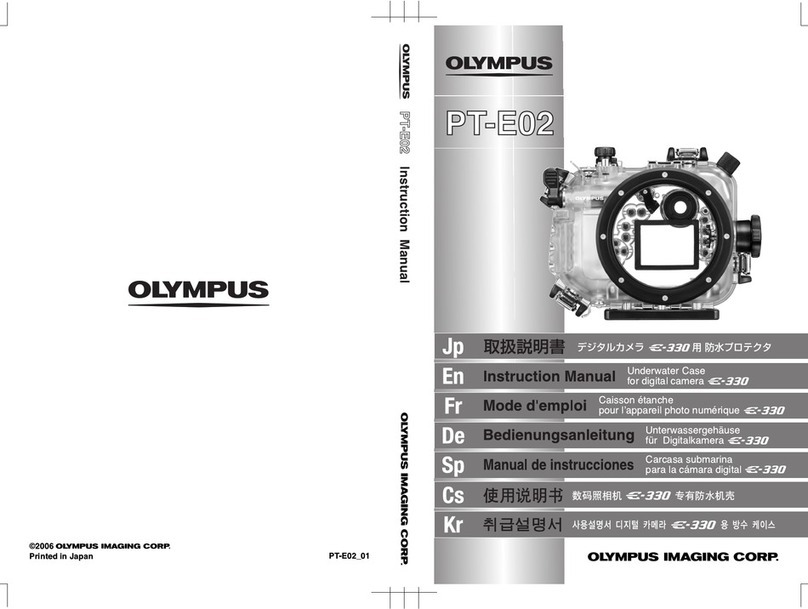GP Powerwall 48V 200AH User manual

安徽江普新能源科技有限公司
Anhui GP New Energy Co., Ltd.
Model: 48V200Ah
Powerwall
LiFePO4 Battery
Specification and Use Manual
Model:48V 200AH

安徽江普新能源科技有限公司
Anhui GP New Energy Co., Ltd.
Model: 48V200Ah Page 1 of 17
1. Application
48V series Powerwall energy storage lithium iron phosphate battery
Remark: This spec is for the Independent Products from Anhui GP New Energy Co.,Ltd. Any upgrade without notification.
Please contact with our sales to get the updated spec.
2. General Information
This specification is suitable for the 48V 200Ah battery pack, and describes its dimensions, characteristics, technical
requirements and precautions for use.
3. Basic Information
Description: LiFePO4 battery pack
Cell Type: LiFePO4
PCM: 15S LiFePO4 15S
Chemistry: LiFePO4
Cell configuration: 15S
Voltage Nominal: 48V
Capacity Nominal: 200Ah
Energy: 9600Wh
Additional Function: RS485 CAN(balancing function)
Protection:
A. Over Charge Protection
B. Over Discharge Protection
C. Over Current Protection
D. Short Protection

安徽江普新能源科技有限公司
Anhui GP New Energy Co., Ltd.
Model: 48V200Ah Page 2 of 17
4. Battery Specification(@ 25±5℃)
NO
Items
Characteristics
System specification
4.1
Normal capacity
200AH
4.2
Nominal energy
9.6KWh
4.3
DC discharge nominal voltage
48Vdc (LFP-15S)
4.4
Rang of DC discharge voltage
37.5V-54.75Vdc
4.5
Internal resistance
≤50mΩ @1kHz AC
4.6
DC normal charge voltage
54.75±1Vdc
4.7
DC float charge voltage
54.75±1Vdc
4.8
Compose method
15S8P
4.9
Allowed MAX charge current
100A
4.10
Recommended charge current
≤50A
4.11
Allowed MAX discharge current
100A
4.12
End of discharge voltage
37.5V
4.13
Display method and language
English
4.14
Communication method
RS485,CAN
4.15
Cooling method
Natural cooling
4.16
Dimension
W 552.4mm
H 169.2(195.85)mm
L 822.4 mm
4.17
IP rating
IP55
4.18
Weight
About 98Kg
4.19
Operation temperature
Charge
0~50℃
Discharge
-20~60℃
4.20
Self-discharge rate
Residual capacity
≤3%/Month; ≤15%/ year
Recover capacity
≤1.5%/Month; ≤8%/ year
4.21
Storage environment
≤1month
-20~+60℃, 5~75%RH
≥3month
-10~+45℃, 5~75%RH
Recommend environment
15~35℃, 5~75%RH

安徽江普新能源科技有限公司
Anhui GP New Energy Co., Ltd.
Model: 48V200Ah Page 3 of 17
5. Circuit Protection
The batteries are supplied with a LiFePO4 Battery Management System (BMS)that can monitor and optimized
each single prismatic cell during charge & discharge, to protect the battery pack overcharge, over discharge,
short circuit. Overall, the BMS helps to ensure safe and accurate running.
No
Item
Content
Criterion
5.1
Over
charge
Over-charge protection Alarm for each
cell
3.55±0.05V
Over-charge protection for each cell
3.65±0.05V
Over-charge protection delay time
0.5~1.5s
Over-charge release for each cell
3.5±0.05V
Over-charge protection Alarm for system
56.8±1V
Over-charge protection for system
58.4±1V
Over-charge protection delay time
0.5~1.5s
Over-charge release for each cell
56.0±1V
Over-charge release method
Under the release voltage than 60s
5.2
Over
discharge
Over-discharge alarm for each cell
2.80±0.05V
Over-discharge protection each cell
2.50±0.05V
Over-discharge protection delay time
0.5~1.5s
Over-discharge release for each cell
3.00±0.05V
Over-discharge alarm for system
44.8±1V
Over-discharge protection system
40.0±1V
Over-discharge protection delay time
0.5~1.5s
Over-discharge release for each cell
48±1V
Over-discharge release method
Higher the release voltage than 60s
5.3
Over
current
Charge over current protection alarm
100±10A
Charge over current protection
100±10A
Charge over current protection delay
time
2~6s
Charge over current release method
Auto release after 1min
Discharge over current protection alarm
100±20A
Discharge over current protection
100±20A
Discharge over current protection delay
time
8~12s
Discharge over current release
Auto release after 1min
Short circuit protection
Yes
Short circuit protection release
cut-off download or exchange fuse
5.4
Temperatur
e
Charge over temperature protection
Protect@55±3℃; Release@50±3℃;
Charge under temperature protection
Protect@0±3℃; Release@5±3℃
Discharge over temperature protection
Protect@65±3℃; Release@60±3℃;
Discharge under temperature protection
Protect@-10±3℃; Release@-5±3℃;

安徽江普新能源科技有限公司
Anhui GP New Energy Co., Ltd.
Model: 48V200Ah Page 4 of 17
6. Battery size
7. System Block Diagram

安徽江普新能源科技有限公司
Anhui GP New Energy Co., Ltd.
Model: 48V200Ah Page 5 of 17
8. Mechanical Information
8.1. Sample Picture
L(Length
)MM
822.4MM
W(Width) MM
552.4MM
H(Height)MM
169.2MM
8.2. Packing
Put the pearl cotton on the front and the back, the left and the right, the top and the bottom 6 sides of the
carton, and put the fittings screws inside.
Carton packing neutral, without any company information.
Inventory of items
Thoroughly inspect the packaging upon receipt of goods. If there is any item that is missing or if there is any
damage to the external packaging or to the unit itself upon unpacking, Please contact with Anhui GP New
Energy Technology Co., Ltd sales.
NO.
Item
Quantity
Specifications
A
Battery PACK
1
48V200Ah
B
Mounting frame
1
SPCC
C
Communication cable
1
1.5 meters of cable
D
Power connector
2
150A/1000V
E
Instruction manual/Warranty Card
1
This document

安徽江普新能源科技有限公司
Anhui GP New Energy Co., Ltd.
Model: 48V200Ah Page 6 of 17
8.3 System communication instructions
8.3.1 RS485 Communication
With RS485 interface, when the batteries are used in parallel, the master Pack communicates with the slave
Pack through the RS485 interface, so that all the information of Pack can be viewed through the RS232 of the
master Pack. The RS485 interface can not be used for parameter setting and corresponding controllable
operation.

安徽江普新能源科技有限公司
Anhui GP New Energy Co., Ltd.
Model: 48V200Ah Page 7 of 17
8.3.2 Dial switch setting
When the batteries are used in parallel, different packs can be distinguished by the hardware address, and the
hardware address of each PACK in the whole battery stack is unique, the hardware address can be set in turn
by the dial switch on the board, switch definitions refer to the following table
Parallel battery settings

安徽江普新能源科技有限公司
Anhui GP New Energy Co., Ltd.
Model: 48V200Ah Page 8 of 17
Master battery setting
Parallel operation method
Each battery needs to be monitored in parallel, So we need to name the battery, Through the dial switch to
achieve. According to the coding requirements, Number each battery according to the definition in 8.4.2, Select
the host and working mode.
After setting the address, please reset the BMS, which will automatically identify the address after reset; when
changing the address later, it also needs to be reset.
Example of dial code setting for battery parallel connection

安徽江普新能源科技有限公司
Anhui GP New Energy Co., Ltd.
Model: 48V200Ah Page 9 of 17

安徽江普新能源科技有限公司
Anhui GP New Energy Co., Ltd.
Model: 48V200Ah Page 10 of 17
8.3.3 Power on the system
After the system equipment is installed, it is generally in the state of shutdown and ready for use; when
necessary, as long as simple power on operation is done, the equipment can be put into normal operation.
8.3.4 System activation and wake up
During the storage and transportation of the battery, or after 24 hours without external power supply and load,
the battery system is always in the sleep state. After the voltage of 48V is applied, the battery system is
activated and enters the normal operation state. It can charge, discharge or enter the standby state. It is
necessary to note that when the battery system is in the state of dormancy, the DC switch power supply used
with the battery system must cancel its anti reverse connection protection function, so that the power system
can be activated by 48V voltage after AC recovery.
8.3.5 System standby and sleep
After the battery system is activated, if the external power supply and load are removed, the battery system will
actively enter the standby state, in which the power consumption is very low. The run light on the panel flashes
to indicate that the battery system is in standby mode. After 24 hours, the battery system will automatically enter
the sleep state. In this state, the power consumption will be lower, and the indicator light on the panel is all off,
indicating that the battery system is in the sleep state.
8.4 System Diagram

安徽江普新能源科技有限公司
Anhui GP New Energy Co., Ltd.
Model: 48V200Ah Page 11 of 17

安徽江普新能源科技有限公司
Anhui GP New Energy Co., Ltd.
Model: 48V200Ah Page 12 of 17

安徽江普新能源科技有限公司
Anhui GP New Energy Co., Ltd.
Model: 48V200Ah Page 13 of 17
8.5 Installation tool
The following tools are required to install the battery pack:
Wire cutter
Crimping Modular Plier
Screw Driver
NOTE
Use properly insulated tools to prevent accidental electric shock or short circuits.
If insulated tools are not available,cover the entire exposed metal surfaces of the available tools,except
their tips,with electrical tape.
Safety Gear
It is recommended to wear the following safety gear when dealing with the battery pack:
Insulated gloves
Safety goggles
Safety shoes
8.6 Installation Location
Make sure that the installation location meets the following conditions:
•The installation site must be suitable for the size and weight of the battery.
•Must be installed on a firm surface to sustain the weight of battery.
•The area is water-proof.
•There are no flammable or explosive materials in proximity.
•The ambient temperature is within the range from 0°C to 45°C.
•The temperature and humidity is maintained at a constant level.
•There is minimal dust and dirt in the area.
•Installation must be vertical or tilted backwards by maximum 15° - avoid forward or sideway stilt.
8.8 Installing the Battery Pack
1. Choose suitable firm wall with thickness greater than 80mm.
2. Use the mounting frame as a template, mark the hole position.
3. Drill 8 holes according to the hole position, it is ø10 with depth 60mm
4. Hammer the M8 screws to the above holes, and screw the nut. Note: Do not position screws flush to
the wall - leave 10 to 20 mm exposed.
5. Fix the mounting frame to the 8 screws.
6. Raise the battery a little higher than the mounting frame whilst maintaining the balance of the battery.
Hang the battery on the frame through the match hooks.

安徽江普新能源科技有限公司
Anhui GP New Energy Co., Ltd.
Model: 48V200Ah Page 14 of 17
9. Caution and prohibition
Before using and handling the pack, see carefully attached “Handling Instruction for Rechargeable Lithium
ion battery Pack”.
For safety reasons rechargeable batteries are not shipped in a low remaining capacity state. Charge before
using.
The battery need to be charged every 6 months if out of use.
No fall down, no pile up over 4 layers, and keep face up.
Please keep the battery away from heat source, high voltage place, and long time sun exposure.
Do not immerse the battery in water.
Do not connect the positive and negative poles of the reverse battery.
Do not use metal to short the positive and negative electrodes of the battery.
Avoid excessive physical vibration and impact on the battery. Do not impact, fall or step on the battery.
It is forbidden to disassemble or assemble the battery without the permission and guidance of the
manufacturer.
It is not allowed to mix batteries of different manufacturers, types and models.
Please do not use or store in high temperature environment, otherwise it will cause battery heating, fire or
reduce service life.
After the battery is used up, please charge it in time (within 15 days).
Please use the matching or recommended professional lithium battery charger.
Please stop using the battery in case of peculiar smell, discoloration, noise, leakage, serious deformation
and other abnormal conditions.
When the electrolyte leaks and splashes into the skin and eyes, please rinse with clean water and see a
doctor immediately.
Please keep the battery out of the reach of children. Children are not allowed to touch the battery.
Do not put the waste battery into water or fire.
This battery pack is not allowed to be used in series or in parallel. If you need series or parallel application,

安徽江普新能源科技有限公司
Anhui GP New Energy Co., Ltd.
Model: 48V200Ah Page 15 of 17
please contact the manufacturer for consultation.
10. Warranty
Manufacturer will be responsible for replacing the battery pack against defects or poor workmanship for 120
months from the date of shipping. Any other problem caused by malfunction of the equipment or misuse of the
battery is battery is not covered under this warranty.
11. Handling Instruction Guide for Li-ion Battery Pack
11.1 General
Battery packs supplied by Anhui GP New Energy have to be handle carefully according to the
specification. Here are some more to be followed:
11.2 Storage of pack
The packs are requested to be stored under the following conditions:
A. Indoor storage in a cool circumstances without direct sun light on the packs or cartons.
B. Store batteries in a dry location with low humidity, and a temperature range of - 20°C to +30°C. In
case of the long term storage.
C. As long-term storage can accelerate battery self-discharge and lead to the deactivation of the
batteries. To minimize the deactivation effect, store battery packs in a temperature range of +10°C to +30°C.
D. When charging for the first time after long-term storage, deactivation of the packs may have led to
decreased capacity. Recover such packs to original performance through repeating several cycles of full
charging and discharging.
E. When store packs for more than 6 month, charge at least once charring require per 6 months to
prevent leakage and deterioration in performance due to self-discharging.
11.3 Charging pack
A. Use suitable charger with the specified voltage and current. We strongly recommend smart battery
charger. We can recommend the usage or specification of the charger manufacturing. If you want to get
the information about it, please contact us.
B. Never attempt reverse charging. Charring with polarity reversed can cause a reversal in battery
polarity, causing gas pressure inside of the battery to rise, which can be lead to leakage of the batteries in
the pack.
C. Avoid overcharging. Repeated overcharging can be lead to deterioration in pack performance. And
Over-heat occurred.
D. Charging efficiency drops at temperatures above 40°C.
11.4 Protection from unexpected damaged to pack
A. (+) and/or (-) terminals must not be connected in metal wire, necklace, chains.
B. Do not drop packs from height in order to prevent them from possible malfunction or damage.
C. Do not twist or bend packs in order to prevent possible damage.

安徽江普新能源科技有限公司
Anhui GP New Energy Co., Ltd.
Model: 48V200Ah Page 16 of 17
11.5 For Safety
A. Do not disassemble packs.
B. Do not use pack when something abnormal found such as smells, deformation, discoloration, and so
on.
C. Do not re-use Li-ion cells or other parts after removing from the packs.
D. When the electrolyte leakage occurs, do not touch the liquid.
E. Once watered, packs may have potential malfunctions. Do not use those packs.
F. Do not have packs in the hot-temperature (60°C or more).
G. Do not put packs into fire.
H. Do not crush/nail pack.
I. Do not apply solder directly to packs.
12. Product maintenance
12.1 Routine maintenance
12.1.1 The charging operation should be supervised by professional personnel. During the charging
process, the plug and socket should be in good contact, the charging equipment should work normally,
and the connection points of the battery pack should be in good contact. If it is abnormal, it needs to be
repaired before charging;
12.1.2 If there are a lot of dust, metal scraps or other sundries on the upper cover and pole of the battery
pack, use compressed air to clean it in time, and avoid using water or water soaked objects to clean it;
12.1.3 When charging and discharging, try to avoid water or other conductive objects splashing on the
battery cover and pole, such as exposure to heavy rain;
12.1.4 The charging time and discharging time of the battery are estimated according to the actual use
state of the battery or battery pack. At the end of charging and discharging, pay attention to observe
whether the battery or battery pack is abnormal, such as the voltage difference of the battery.
12.2 Regular maintenance
12.2.1 Check whether the conductive belt, voltage acquisition terminal and other nodes are loose, falling
off, rusty or deformed to ensure that the series parallel wiring harness used by the battery pack is firm
and reliable (once a month);
12.2.2 Check the battery shell for cracks, deformation, pole looseness, bulge and other abnormalities
(once a month);
12.2.3 Check the reliability of charging equipment to ensure that the battery will not be overcharged
(once a month);
12.2.4、In case of inconsistency of charged quantity of battery pack, after consulting the manufacturer
and under the permission and guidance of the manufacturer, the following solutions can be adopted:
AIt is better to use a management system with equalization function and good equalization effect,
preferably a management system with equalization charging function.
BCharge all single batteries to 3.65v with a charging current less than 0.3C.

安徽江普新能源科技有限公司
Anhui GP New Energy Co., Ltd.
Model: 48V200Ah Page 17 of 17
Method 1: first, the whole battery is charged by series charger until the upper limit voltage protection of
single battery appears, and then all single batteries are charged by constant current charger (equalizing
charging equipment) with limited voltage of 3.65v until the voltage of all single batteries reaches 3.65v.
The performance index of the equalization charging equipment is that the input voltage can be set
according to the local AC voltage, such as AC220 V, the output voltage is dc3.65 V, and the output
current is 0.01 C, such as 10 A or 20 a. (once / 3 months or when the charged quantity is inconsistent)
Method 2: remove all the batteries in the battery pack, and use the charging and discharging test cabinet
to fully charge all the batteries, so that their charge is consistent. (once / 3 months or when the charged
quantity is inconsistent)
CThe voltage of all single cells was put to 2.3V with a discharge current less than 0.3C.
Method 1: remove all the batteries in the battery pack, and put all the batteries into 2.3V with the charge
and discharge test cabinet, so that their charge is consistent. (once / 3 months or when the charged
quantity is inconsistent)
Method 2: first, discharge the whole set of batteries until under voltage protection of single battery
appears. Then, the battery is discharged by the discharge equipment with limited voltage of 2.8V until the
voltage of all cells is equal to 2.8V. For the discharge equipment with limited voltage of 2.8V, the
discharge resistance can be controlled by voltage comparator and discharge relay. The discharge power
device is a resistance wire with a diameter of 5mm and a length of 50cm, and the current is about 20
amperes (suitable for the battery pack which can be easily disassembled). Or use 1 ohm 15W resistor,
the discharge current is about 3 amperes, it is suitable for the battery pack that is not convenient to
disassemble, it can be discharged for a long time with small current through the voltage acquisition line of
the management system). (once / 3 months or when the charged quantity is inconsistent)
13. Other chemical reactions
Because the battery is based on the principle of chemical reaction, the performance of the battery will
decrease with the increase of time, even if it is stored for a long time without use. If the use conditions
such as charging, discharging and ambient temperature are not within the specified range, the service
life of the battery will be shortened, or the leakage will cause equipment damage. If there is a big
difference between the normal discharge time and the fully charged battery, even if the charging method
is correct, it means that the battery needs to be replaced.
14. Executive standard
14.1 IEC 62619: 2017 International standard for energy storage batteries
《Secondary cells and batteries containing alkaline or other non-acid electrolytes –Safety requirement
s for secondary lithium cells and batteries, for use in industrial applications》
14.2 GJB 4477-2002 General specification for lithium ion batteries
14.3 GB 4208-2008 Enclosure protection level (IP code)
14.4 UL1973:2018 Batteries for Use in Stationary,Vehicle Auxiliary Power and Light Electric Rail(LER)
Applications
14.5 UN 38.3 《United Nations Manual of transport tests and standards for dangerous goods》Part 3 38.3
Table of contents
Other GP Camera Accessories manuals


